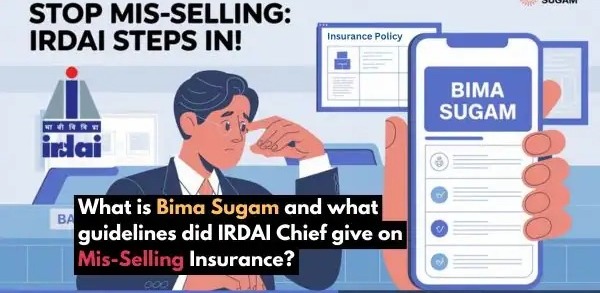Sham sunder, J.@mdashThis appeal is directed against the judgment of conviction, and the order of sentence dated 29.7.1994, rendered by the Court of Addl. Sessions Judge, Ludhiana, vide which it convicted the accused/appellant, for the offence, punishable under Section 363 of the IPC, and sentenced him to undergo rigorous imprisonment for a period of five years, and to pay a fine of Rs.500/, and in default of payment of the same, to undergo rigorous imprisonment for another period of six months.
2. The facts, in brief, are that, Ram Rattan, father of the prosecutrix made a statement, on 2.10.1992, to the effect, that he was a resident of Viskarma Colony, Ludhiana, where he was living with his family. His eldest daughter, the prosecutrix, aged about 16 years, was studying in 10+1, in Gurunanak Khalsa College, Model Town, Ludhiana. He had rented out two rooms, to Surinder Singh, accused, posted as a Constable at Ludhiana. On 5.9.1992, the prosecutrix had gone to attend the college, but she did not come back. He made continuous search of his daughter, by going to his relatives, and friends, but without any fruitful result. He entertained a belief, that his daughter, had been kidnapped by Surinder Singh, and had been taken to some place. On the basis of his statement, the FIR was registered. The investigation was taken up by Satnam Singh, ASI. He came to know from Police Lines, Ludhiana, that Surinder Singh, had been absent from duty since 27.9.1992. Thereafter, the investigation was entrusted to Hari Kishan, SI. On 13.10.1992, he (Hari Kishan, SI) was present at Cheema Chowk, at about 11.00 AM, when the prosecutrix met him there. He recorded her statement, Ex.DA. The father of the prosecutrix was called, and, thereafter, the prosecutrix was taken to the Civil Hospital, where she was medicolegally examined by lady doctor Dr. Jagdish Kaur. After medico legal examination, her custody was handed over to her father. On 17.10.1992, Hari Kishan, SI, was present alongwith other police officials, at Samrala Chowk, when the accused got down from a bus, which came from the side of Jalandhar. He was apprehended. He was arrested, and got medicolegally examined from the Civil Hospital, Ludhiana, from Dr. G.P.Mangla. After the completion of investigation, the accused was challaned.
3. On appearance, in the Court, the copies of documents, relied upon by the prosecution, were supplied to the accused. Charge under Sections 363, 366A, 376 and 376 of the IPC, was framed against him, to which he pleaded not guilty, and claimed judicial trial.
4. The prosecution, in support of its case, examined Dr. G.P.Mangla (PW1), Mrs. Promila Kapoor (PW2), Ravinder Singh (PW3), Dr. Jagdish Kaur Sidhu (PW4), Dr. Anupam Dutt (PW5), Tarsem Singh, HC (PW6), Ram Rattan (PW7), Satnam Singh, ASI (PW8), the prosecutrix (PW9), and Hari Singh, SI (PW10). Thereafter, the Addl. Public Prosecutor for the State, closed the prosecution evidence.
5. The statement of the accused, under Section 313 Cr.P.C., was recorded, and he was put all the incriminating circumstances, appearing against him, in the prosecution evidence. He pleaded false implication. It was stated by him, that the prosecutrix had left her house of her own sweet will. He, however, examined Capt. Bachan Singh (DW1), and Harbans Kaur (DW2), in his defence. Thereafter, he closed his defence evidence.
6. After hearing the Addl. Public Prosecutor for the State, the Counsel for the accused, and, on going through the evidence, on record, the trial Court, convicted and sentenced the accused/appellant, for the offence, punishable under Section 363 of the IPC, but acquitted him, for the offences punishable under Section 366A, 376 and 376 of the IPC.
7. Feeling aggrieved, against the judgment of conviction, and the order of sentence, rendered by the trial Court, the instant appeal, was filed by the appellant.
8. I have heard the learned Counsel for the parties, and have gone through the evidence and record of the case, carefully.
9. The Counsel for the appellant, at the very outset, submitted that the prosecutrix was above 18 years of age, at the time, she allegedly left her house of her own accord, with the accused, and, as such, no offence punishable, under Section 363 of the IPC, was committed by him. He placed reliance, on the ossification test, in this regard. The submission of the Counsel for the appellant, in this regard, does not appear to be correct. Ex.PB, is the birth certificate. According to this certificate, a girl was born on 4.6.1976. The name of the mother of the girl is written as Saroj, and the name of the father of the girl, is written as Ram Rattan. The address of the parents of the girl, is written as BII, 1328, Arya Mohalla, Ludhiana. Ram Rattan, father of the prosecutrix, when appeared as PW7, stated that she was born on 4.6.1976. The certificate aforesaid, therefore, was connected with the prosecutrix. The birth certificate has got strong evidentiary value, as this document was prepared, by a public servant, in the discharge of his official duties. Not only this, even Mrs. Promila Kapoor (PW2), testified that the prosecutrix had studied, in her School, from 6th class, upto matriculation, and her date of birth recorded, in the record, of that school was 4.6.1976. It was clearly proved that on 5.9.1992, when the occurrence took place, the prosecutrix was below the age of 18 years. She was only aged about 16 years, and 3 months. In the face of such cogent, and convincing documentary evidence, regarding the date of birth of the prosecutrix, no reliance on the ossification test of the prosecutrix, could be placed. It is wellsettled by now, that the ossification test cannot be said to be a conclusive test, to prove the age of a person. The documentary evidence, regarding the date of birth of the prosecutrix, thus, overrides the ossification test. In this view of the matter, the submission of the Counsel for the appellant, being without merit, must fail, and the same stands rejected.
10. It was next submitted by the Counsel for the appellant, that no reliable evidence was produced by the prosecution, to the effect, that the prosecutrix was kidnapped from the lawful guardianship of her parents. The submission of the Counsel for the appellant, in this regard, does not appear to be correct. It has come, in the evidence of Ram Rattan (PW7), father of the prosecutrix, that the accused was a tenant, in his house. He in clearcut terms stated, that on 5.9.1992, her daughter (the prosecutrix) went to her college, on rickshaw, but did not return. He searched her from his relatives and friends, but she could not be traced. He further stated that the accused continued misleading him, for 2022 days, and, thereafter, he got suspicious about his conduct. He also stated that the accused had also been missing since 5.9.1992. The prosecutrix, when appeared, as PW9, in clearcut terms, stated that on 4.9.1992, the accused met her, at her house, and asked her to accompany him, but she declined his request. Again on 5.9.1992, the accused came to her college, and met her, at the gate. She further stated, in clear cut terms, that he threatened her to accompany him, and under threat, he forcibly took her, on his scooter. She further stated that she was taken to various places, by the accused, and even to his relations. In the first instance, the prosecutrix, at the relevant time, was minor, below 18 years of age, and secondly there is no evidence, on record, that she accompanied him (accused), of her own. She accompanied the accused, as she was threatened by him. The consent or noconsent of the prosecutrix, in the instant case, was hardly of any consequence, she being minor at the relevant time. It was, thus, proved that she was kidnapped, from the lawful guardianship of her parents, by the accused. The evidence of Ram Rattan, (PW7), the father of the prosecutrix, as also of the prosecutrix, is reliable. The trial Court was right in placing reliance thereon, to come to the conclusion, that she was kidnapped from the lawful guardianship of her parents. Both these witnesses were thoroughly crossexamined, but nothing of consequence, could be got elicited from their mouth, which may go to discredit their evidence. Under these circumstances, the submission of the Counsel for the appellant, being without merit, must fail, and the same stands rejected.
11. It was next submitted by the Counsel for the appellant, that the prosecutrix, and the accused, remained together for 35/40 days, and it could be said that she was a consenting party. The accused was acquitted of the charge framed against him, for the offences, punishable under Sections 366A and 376 of the IPC. The mere fact that both of them remained together for 35/40 days, did not absolve the accused of his criminal liability of committing the offence, punishable under Section 363 of the IPC, for kidnapping her, from the custody of her lawful guardianship. In this view of the matter, the submission of the Counsel for the appellant, being without merit, must fail, and the same stands rejected.
12. In the last, the Counsel for the appellant, submitted that the appellant has been facing the agony of criminal proceedings, since 1992, and his sentence be reduced to the minimum. The submission of the Counsel for the appellant, in this regard, does not merit acceptance. As stated above, the accused was a tenant, in the house of the father of the prosecutrix. He was just like a family member of the family of the prosecutrix. He betrayed the faith of his landlord, and enticed his daughter, below 18 years of age, at the relevant time. Not only this, the accused was posted as a Police Constable, in the Punjab Police, at the relevant time. He being a member of the discplined force, was required to display an exemplary conduct. On the other hand, he misconducted himself and tarnished the image of the entire police force. Keeping in view the gravity of offence, committed by him, no ground is made out, for the reduction of sentence, awarded to him, by the trial Court. The submission of the Counsel for the appellant, being without merit, must fail, and the same stands rejected.
13. No other point, was urged, by the Counsel for the parties.
14. In view of the above discussion, it is held that the judgment of conviction and the order of sentence, rendered by the trial Court, are based on the correct appreciation of evidence, and law, on the point. The same do not warrant any interference, and are liable to be upheld.
15. For the reasons recorded, hereinbefore, the appeal is dismissed. The judgment of conviction, and the order of sentence dated 29.7.1994, are upheld. If the appellant is on bail, his bail bonds, shall stand cancelled. The Chief Judicial Magistrate, Ludhiana, shall take necessary steps, to comply with the judgment, with due promptitude, and compliance report be sent within a period of one month, from the date of receipt of a copy thereof.
16. The District & Sessions Judge, Ludhiana, shall ensure that the directions are complied with, by the concerned Court, and the compliance report, is submitted within the time frame.
17. The Registry is directed to keep track of the matter, and put up the file with the compliance report. Even if, the compliance report is not received within the time frame, the papers shall be put up, within 10 days, after the expiry of the stipulated period.

